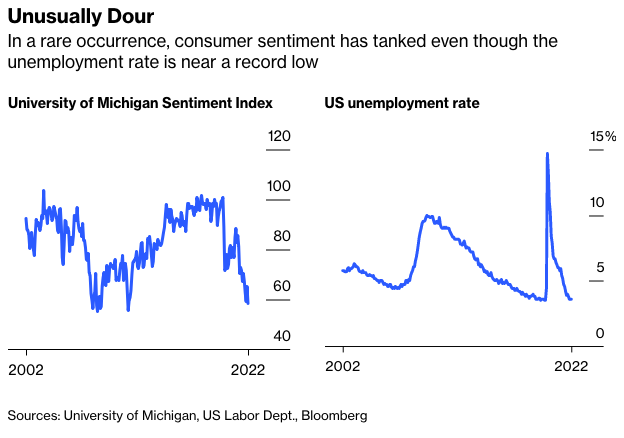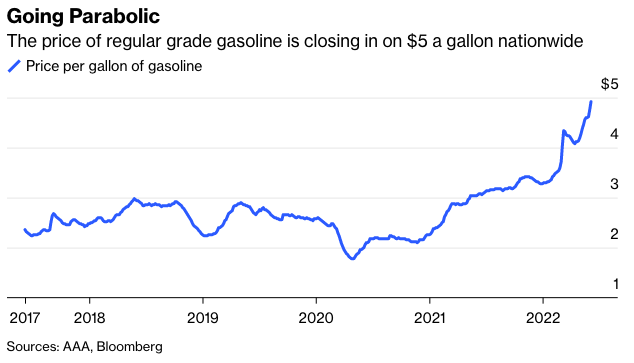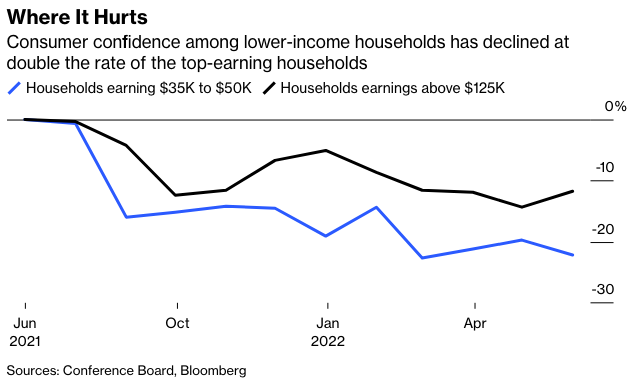Consumer confidence has tanked, with the University of Michigan’s widely followed sentiment index at its lowest since 2011. This is incongruous with the fact that the labor market is very hot. The last time confidence was this low the unemployment rate was 9% and people were worried about the potential for a “double-dip” recession so soon after the global financial crisis. Now, the unemployment rate is a miniscule 3.6%. And although things are slowing, consumer spending—which accounts for two-thirds of the economy—is strong.
I went to the local Tanger Outlets shopping mall in Myrtle Beach, South Carolina, to kill some time over the weekend and look for gym shorts. Most of the stores were busy. You wouldn’t see that if people were pessimistic about the outlook for jobs. We’ve been hearing from smart Wall Street types that the economy is slowing, and that we have an increased probability of a recession, but when it comes to consumption, I just don’t see it. And good luck buying a house without going up against competing bidders even with the jump in mortgage rates.

So rather than jobs, what has consumers gloomy is inflation that has become persistently high, with consumer prices rising faster than wages. The evening newscasts are filled with reports on surging gasoline prices and even people whose rents are going up so much that there is the possibility that they would end up homeless.

These are valid concerns, just not ones that wealthy people are having. Higher income households can absorb price increases on things such as food, fuel and housing costs. Households earning less than the median income of $50,000 is living on a strict budget, and when gas prices, food or rent increase by 20% to 30%, they are forced to make hard economic choices. No wonder that the Conference Board’s index of consumer confidence among those with household incomes of $35,000 to $49,999 a year has fallen twice as much over the past 12 months as the one tracking those with household incomes above $125,000.

So, what’s up with all the reports showing big gains in spending? Is this a case of what consumers do and not what they say? Not exactly. The first part of any inflationary episode is always good for the economy. Economic activity tends to pick up and wage growth accelerates. Between the start of 1971 and mid-1973, GDP expanded at a 6% average annualized pace. The trick is not to get fooled by nominal GDP growth. Inflation becomes a problem if it leads to a dreaded wage-price spiral like what happened in the 1970s after the initial growth spurt that came from inflation.
The only thing I am surprised about the current situation is how short the “fun” inflationary phase was, lasting only about six months before consumers began complaining. But perhaps I shouldn’t be surprised given how fast various measures of what’s known as the misery index, which adds the rate of inflation to the rate of unemployment, have gone from being well below the long-term average to well above. And that’s all due to how fast the inflation rate has risen.
What we are re-learning is that while inflation leads to consumer misery, it doesn’t really slow the economy, at least not initially. The early stages of an inflationary period tend to spur economic activity, with people speeding up their purchases to buy now and often in bulk before prices rise further. The lesson, then, is just because the economy is growing faster doesn’t mean that it is stronger.








